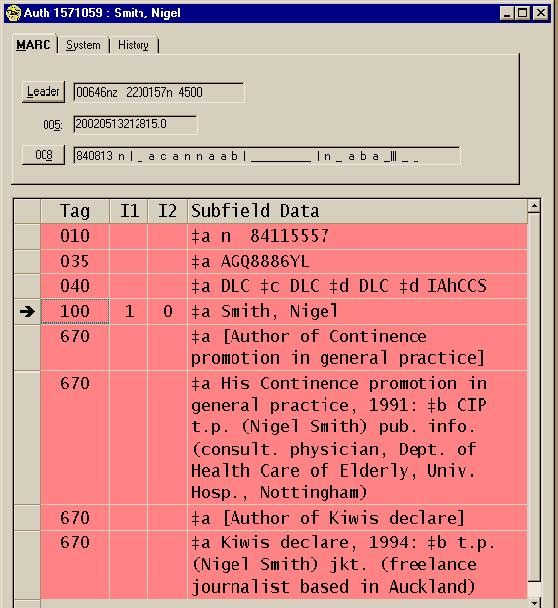Undifferentiated Name Authority Records
Question: What is an Undifferentiated Name Authority Record?
Most personal name headings in authority records are unique. Each authority record represents a single person (or, in the case of pseudonyms, a single bibliographic identity). If two people happen to share the same name, then other information (such as birth and death dates) can be used to differentiate them.
However, sometimes two people with the same name cannot be distinguished. Their birth and death dates cannot be determined from reference sources and no other information can be found to break the conflict. In these cases, catalogers will generally create what is called an "undifferentiated personal name" authority record. The same record (and the same heading) will be used to represent more than one person in the catalog.
How can you recognize these records?
One way is to check the 008 fixed field called "undifferentiated personal name." If this field contains the letter "b," then the record is an undifferentiated personal name record.
However, a more immediate way of identifying such a record is by the distinctive pattern of its 670 fields. The 670 fields occur in pairs and each pair represents a different person or identity. The first 670 in each pair will contain a generic phrase such as "[Author of .....] in square brackets. The second 670 will contain the title of the work associated with that person.
An example of an "undifferentiated personal name" authority record is shown below. As you can see, the first "Nigel Smith" is a physician. The second "Nigel Smith" is a journalist:

If a birth or death date is later found for an identity on this authority record, that identity will be taken off and a new record (with a unique heading) will be created for that person.